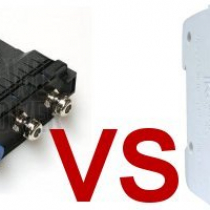Blog - BMS Systems

BMS versus Circuit Breaker – understanding the BMS operation
BMS versus Circuit Breaker – understanding the BMS operation
The Battery Management System (BMS) has a function similar to the circuit breaker in the 230V AC power network. The circuit breaker is the last instance protection hardware to avoid problem in case there is some irregular situation on the 230V power network.
The circuit breaker is not designed to be used as a main switch, or to be used as a some regular protection device. In regular operation the circuit breaker is „not used at all“.
The same is the operation of the BMS. The BMS protective function should be used as the last step to avoid some hazardous situations that would lead to battery malfunction and damage.
The primary protective function for the battery pack should be designed by means of the regular operation limits. For example there is a battery pack in some device and the regular operation of the battery pack will be kept within the 20% to 80% of the SOC [state of charge] of the pack. This limit can be made by some time counters (timers to charge and to discharge only for a certain time). It can be made by voltage level monitoring (e.g. N x 3.00V low voltage, N x 3.60V high voltage [N is the number of cells]), or it can be made by some capacity meters (charge and discharge energy counters). In such a situation, the BMS protective function will never become active, because the charge-discharge cycle will be always within the safe operation limits.
The secondary protective level should be done by the charging and discharging equipment. This means the equipment should have settings to stop working when there is an irregular situation. For example: the charger will charge to a maximal voltage level and it should stop when the voltage level is over-reached (typically at N x 3.65V as full charge voltage). Or the discharging apparatus will stop at certain low voltage level – e.g. the DC/AC inverter should stop at Nx 2.80V low voltage level). This means that in the case the primary (operational) protective level should fail, there will be another level of protection by the equipment itself. Again, in such a situation the operation of the battery pack will stay within the safe limits, without the need for the BMS to act as a final protective device.
In some installations there may be some tertiary [3rd stage] protective measures that may be applied to protect the battery pack. These may involve temperature monitoring of the battery pack, current monitoring, and voltage monitoring (for example using the CellLog devices or similar products). The tertiary protective measure will again work in case there is some irregular situation that was not handled on the primary (operational) and secondary (protective) level.
As a must !!! - Every battery pack should be equipped with DC power high current fuse to disconnect the battery pack in case of hard core short circuit. We also strongy recommend to install fire, smoke, heat alarm warning equipment to limit the risks of smoke, overheating and fire.
Finally: as the last protective measure, there is the BMS that should interact with the operation of the battery pack only in the extreme case of some irregular operation that was not handled by the above mentioned protective levels. The BMS system is a low level monitoring system that monitors the status of each cell. It should really be used exclusively as a last resort protective measure, especially in the case there is some irregular operation (e.g. dis-balancing) on the lowest level – on the individual cell voltage level.
Our recommendation is that the BMS should be always used in connection with the other protective levels. Remember the example of the circuit breaker – in the all the normal conditions, you should always avoid the situations of needing to use the circuit breaker to stop your equipment. The same is with the BMS: it should interact only in case of rare and extreme situations.
Additional notes:
The success of the operation of the battery pack is related to the proper initial charging of the cells to the same voltage level. This means: if all of the cells in the pack are properly balanced to the same voltage level, the pack will operate very coherently (identically) and all cells will stave within the same voltage level. Check our tips for the charging of the cells.
Additional success of the operation of the battery pack is to stay within the safe voltage levels. Simply said: there is not much benefit of discharging the battery pack to very low levels, and charging the pack to very high levels. It is the best to stay within the save limits where all the cells behave identically.

 English
English Česká republika
Česká republika Germany
Germany France
France España
España Italia
Italia Sverige
Sverige Polski
Polski Nederland
Nederland









